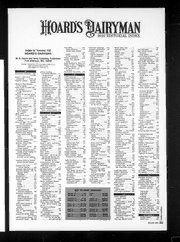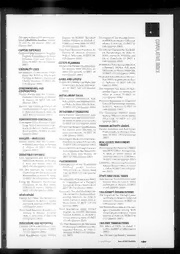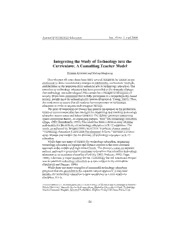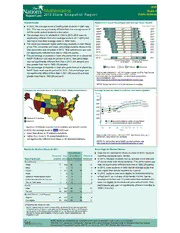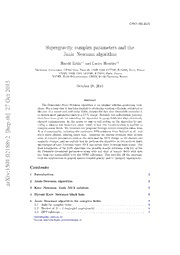
Supergravity, complex parameters and the Janis-Newman algorithm PDF
Preview Supergravity, complex parameters and the Janis-Newman algorithm
CPHT-001.0115 Supergravity, complex parameters and the Janis–Newman algorithm Harold Erbin∗1 and Lucien Heurtier†2 1Sorbonne Universités, UPMC Univ Paris 06, UMR 7589, LPTHE, F-75005, Paris, France 1CNRS, UMR 7589, LPTHE, F-75005, Paris, France 2CPHT, École Polytechnique, CNRS, 91128 Palaiseau, France 5 1 October 28, 2015 0 2 t c O Abstract 7 The Demiański–Janis–Newman algorithm is an original solution generating tech- 2 nique. Foralongtimeithasbeenlimitedtoproducingrotatingsolutions,restrictedto the case of a metric and real scalar fields, despite the fact that Demiański extended it ] toincludemoreparameterssuchasaNUTcharge. Recentlytwoindependentprescrip- h tions have been given for extending the algorithm to gauge fields and thus electrically t - charged configurations. In this paper we aim to end setting up the algorithm by pro- p viding a missing but important piece, which is how the transformation is applied to e complex scalar fields. We illustrate our proposal through several examples taken from h [ N = 2 supergravity, including the stationary BPS solutions from Behrndt et al. and Sen’s axion–dilaton rotating black hole. Moreover we discuss solutions that include 2 pairsofcomplexparameters,suchasthemassandtheNUTcharge,ortheelectricand v magnetic charges, and we explain how to perform the algorithm in this context (with 8 theexampleofKerr–Newman–Taub–NUTanddyonicKerr–Newmanblackholes). The 8 final formulation of the DJN algorithm can possibly handle solutions with five of the 1 six Plebański–Demiański parameters along with any type of bosonic fields with spin 2 0 less than two (exemplified with the SWIP solutions). This provides all the necessary . tools for applications to general matter-coupled gravity and to (gauged) supergravity. 1 0 5 Contents 1 : v 1 Introduction 2 i X 2 Janis-Newman algorithm 3 r a 3 Kerr–Newman–Taub–NUT solution 5 4 Dyonic Kerr–Newman black hole 6 5 Janis–Newman algorithm for complex fields 7 5.1 Rule for complex fields . . . . . . . . . . . . . . . . . . . . . . . . . . . . . . . 8 5.2 Review of N =2 ungauged supergravity . . . . . . . . . . . . . . . . . . . . . 8 5.3 BPS solutions . . . . . . . . . . . . . . . . . . . . . . . . . . . . . . . . . . . . 9 ∗erbin@lpthe.jussieu.fr †lucien.heurtier@cpht.polytechnique.fr 5.3.1 Pure supergravity . . . . . . . . . . . . . . . . . . . . . . . . . . . . . 10 5.3.2 STU model . . . . . . . . . . . . . . . . . . . . . . . . . . . . . . . . . 10 5.4 Dilaton–axion black hole – T3 model . . . . . . . . . . . . . . . . . . . . . . . 11 6 Conclusion and perspectives 12 A Supergravity solutions with a NUT charge 13 A.1 Pure supergravity. . . . . . . . . . . . . . . . . . . . . . . . . . . . . . . . . . 13 A.2 SWIP solutions . . . . . . . . . . . . . . . . . . . . . . . . . . . . . . . . . . . 14 References 15 1 Introduction The Janis–Newman (JN) algorithm is a peculiar solution generating technique. It was originally designed to add an angular momentum a to a static solution with mass m and electric charge q [1, 2], before being extended by Demiański and Newman to add a NUT charge n [3, 4] – we will call this version the Demiański–Janis–Newman (DJN) algorithm. Recent reviews of the JN algorithm can be found in [5, 6]. Supergravityrotatingsolutionsisanintensefieldofresearch,anditissurprisingthatthe (D)JN algorithm has almost never been applied in this context (with the exception of [7]). One explanation is that such theories present a number of gauge fields and complex scalar fields that could not be transformed in the original formulation of the DJN algorithm. For instance, Yazadjiev [7] showed that it was possible to obtain the metric and the dilaton of Sen’sdilaton–axionchargedrotatingblackhole[8](non-extremalsolutionoftheT3 model), but did not succeed in finding the axion nor the gauge field. Each of these problems possess a different explanation. First of all, it was not known how to perform the transformation on the gauge field until recently, where two different prescriptions have been proposed [5, 9, 10]. Thesecondproblemcanbetracedtothefactthatthedilatonandtheaxionarenaturally gathered into a complex scalar field, and any attempt to transform each field independently can only fail, the reason being that the axion is vanishing for the static configuration, while itisnon-zerofortherotatingblackhole. Moreovertheusualtransformationrulescannotbe appliedtocomplexscalarfieldsbecausetheyincludearealityconditionwhichisatoostrong requirement for transforming complex fields, and one of the goal of the paper is to show how to modify the original prescription to accommodate this new fact. We will illustrate this proposal on several examples, all taken from N =2 ungauged supergravity, completing Yazadjiev’s analysis [7] of Sen’s rotating black hole, and showing how some BPS rotating black holes from [11] can be obtained (which includes solutions from pure supergravity and from the STU model). AnotherissueariseswhenoneconsiderstheNUTcharge. Indeedalong-standingproblem of the DJN algorithm was the impossibility to find the metric function using the usual rules of the JN algorithm. We recently demonstrated [6] how to extend the algorithm by complexifying also the mass m=m0+in, and we will recall the details with the example of the Kerr–Newman–Taub–NUT solution. A related case is the dyonic Reissner–Nordström with electric and magnetic charges q and p, which can be used as a seed metric for deriving the dyonic Kerr–Newman solution. It is necessary to follow the recipe of the previous examples, since the original JN rules are failingagain. Thisisrelatedtothefactthattheelectricandmagneticchargesarenaturally associatedintothe(complex)centralchargeZ =q+ip. Inthiswaywesucceedinperforming the JN algorithm to a solution with magnetic charges. 2 Parameters are naturally gathered into complex pairs in the framework of Plebański– Demiańskiformalism[12,13]andthusitshouldnotbetoosurprisingtofindagainthatthese combinations are the one which should be used for a consistent DJN algorithm. Moreover the fact that coordinates and parameters can be complexified for generating new solutions was already present in the formalism of Quevedo [14, 15]. Finally let’s note that all these solutions can be embedded into N =2 supergravity [16, 17]. Thepaperisorganizedasfollows. Insection2werecalltheDJNalgorithmtoolsderived in [6],presentingitsmainstepsandformulas. Insections3and4weshowhowtoobtainthe Kerr–Newman–Taub-NUT and dyonic Kerr–Newman solutions using the latter. Finally in section 5 we explain how to extend the JN algorithm to complex scalar fields in the context of N =2 supergravity. Appendix A contains a discussion on the addition of a NUT charge for solutions of pure N =2 supergravity, along with a discussion of SWIP solutions. 2 Janis-Newman algorithm InthissectionwesummarizethemainideaoftheDemiański–Janis–Newmanalgorithm[1,4] andwegivegeneralformulasderivedin[6].Whiletheoriginalalgorithmhasbeenformulated in terms of Newman–Penrose formalism, we will use the simpler prescription due to G. Giampieri,whichhasbeenshowntobeequivalent[10,18].Fordetailsonthefirstformulation we refer the reader to the literature [1, 2, 5, 9, 19]. Let’s consider the metric and gauge field ds2 =−f (r)dt2+f (r)dr2+f (r)dΩ2, (2.1a) t r Ω A(r)=f (r)dt, (2.1b) A and a set of real scalar fields χ (r), where a dΩ2 =dθ2+H(θ)2dφ2, H(θ)≡sinθ (2.2) (H being used for shortening subsequent expressions). It is not necessary to specify the action for performing the algorithm as one needs only the expressions of the various seed fields, but one needs to check that the result is a solution of the equations of motion. Indeed it is not fully understood under which conditions the algorithm will send a solution to another solution (for some proofs and discussions, see [4–6, 19–24]). In this paper we restrict ourselves to vanishing cosmological constant. The DJN algorithm requires introducing the null coordinates s f dt=du+ r dr, (2.3) f t and the metric and gauge field resulting from (2.1a) and (2.1b) are p ds2 =−f du2−2 f f dudr+f (r)dΩ2, (2.4a) t t r Ω A=f du, (2.4b) A where the r-component of the gauge field has been removed with a gauge transformation, a step which is primordial for having a consistent DJN transformation. The DJN starts by letting the coordinates u and r to be complex under the condition that the metric, the gauge fields and the scalar fields are still real. Then one can perform the complex change of variables r =r0+iF(θ), u=u0+iG(θ), (2.5) 3 where u0,r0 ∈R and 1 F(θ)=n−aH0(θ), G(θ)=aH0(θ)−2nlnH(θ), (2.6) or by replacing H =sinθ F(θ)=n−acosθ, G(θ)=acosθ−2nlnsinθ. (2.7) The parameters a and n are respectively interpreted as the angular momentum and the NUT charge of the solution. The differentials of (2.5) dr =dr0+iF0dθ, du=du0+iG0dθ (2.8) are complex and they would spoil the reality of the metric. For this reason one makes the ansatz idθ =Hdφ (2.9) resulting into dr =dr0+F0Hdφ, du=du0+G0Hdφ. (2.10) The form of the ansatz is justified from comparison with the tetrad formalism [10, 18, 25]. For comprehensiveness the derivatives of (2.7) are given F0(θ)=asinθ, G0(θ)=−asinθ−2ntanθ. (2.11) Along these coordinates transformations, the four r-dependent functions and the scalar fields F (r)≡{f ,f ,f ,f ,χ } (2.12) i t r Ω A a transform accordingly into Ffi ≡{f˜t,f˜r,f˜Ω,f˜A,χ˜a}. (2.13) We will refer to this step as the "complexification" of the functions F even if the functions i Ffi are real. There are only two conditions that we impose on these functions Ffi =Ffi(cid:0)r0,F(θ)(cid:1)∈R, Ffi(r,0)=Fi(r). (2.14) Note that the primes will be often omitted once transformations on the coordinates are performed in the rest of the paper. The way to transform the functions is not constrained bythealgorithmitselfandthechoiceissomewhatarbitrary. Nonethelessasetofruleshave been found from various examples 1 r −→ (r+r¯)=Rer, (2.15a) 2 (cid:18) (cid:19) 1 1 1 1 Rer −→ + = , (2.15b) r 2 r r¯ |r|2 r2 −→|r|2, (2.15c) anditwasexplainedin[10,app.B]thatseveralofthesepossibilitiesareperfectlyequivalent. As we will see in the rest of this paper, these rules do not apply when n6=0 or in presence of complex scalar fields. 1Anextraparametercanbeadded[4,6],butwewillnotneeditinthiswork. 4 Performing the DJN transformations with (2.5) and (2.10) on the metric (2.4a) and gauge field (2.4b) gives ds2 =−f˜(du+αdr+ωHdφ)2+2βdrdφ+f˜ (dθ2+σ2H2dφ2), (2.16a) t Ω A=f˜ (du+G0Hdφ) (2.16b) A where the following quantities have been defined s s f˜ f˜ f˜ ω =G0+ r F0, σ2 =1+ r F02, α= r, β =f˜ F0H. (2.17) f˜ f˜ f˜ r t Ω t Finally Boyer–Lindquist (BL) coordinates follow from the transformation du=dt−g(r)dr, dφ=dφ0−h(r)dr (2.18) with q g(r)= (cid:0)f˜tf˜r(cid:1)−1f˜Ω−F0G0, h(r)= F0 , ∆= f˜Ω +F02 = f˜Ω σ2. (2.19) ∆ H(θ)∆ f˜ f˜ r r Letusinsistonthefactthatthetransformationiswelldefinedonlyifgandhareindependent of θ when plugging the explicit expressions of the functions. Finally the metric in (t,r) coordinates can be written (cid:18)dr2 (cid:19) ds2 =−f˜(dt+ωHdφ)2+f˜ +dθ2+σ2H2dφ2 , (2.20a) t Ω ∆ ! f˜ A=f˜ dt− Ω dr+G0Hdφ . (2.20b) A pf˜f˜ ∆ t r In most of the cases A will depend only on r and can consequently be removed by a gauge r transformation. 3 Kerr–Newman–Taub–NUT solution Along-standingdifficultyofDemiański’sextensionoftheJNalgorithm[4]wastheimpossi- bilitytofindthecomplexificationofthemetricfunctionthatwasleadingfromSchwarzschild to Kerr–Taub–NUT. In this section we recall the solution to this problem that we gave in a previous paper [10], where we extended Demiański’s result to Kerr–Newman–Taub–NUT. Reissner–Nordström metric is given by 2m q2 ds2 =−f(r)dt2+f(r)−1dr2+r2dΩ2, f(r)=1− + , (3.1a) r r2 m and q being the mass and the electric charge, and the electromagnetic gauge field reads q A= dt. (3.1b) r As explained above, applying the algorithm described in section 2 does not lead to the KN–TN solution. In fact one needs to also complexify the mass. In this case the function f is complexified as (cid:18)m m¯ (cid:19) q2 2Re(mr¯)+q2 f˜=1− + + =1− , (3.2) r r¯ |r|2 |r|2 5 and performing the transformation m=m0+in, r =r0+iF (3.3) gives (omitting the primes) 2mr+2nF f˜=1− , ρ2 =r2+F2. (3.4) ρ2 Considering the transformations (2.7) leads to 2mr−q2+n(n−acosθ) f˜=1− , ρ2 =r2+(n−acosθ)2. (3.5) ρ2 The metric and the gauge fields in BL coordinates can be read from (2.20) to be ρ2 ds2 =−f˜(dt+Ωdφ)2+ dr2+ρ2(dθ2+σ2H2dφ2), (3.6a) ∆ q (cid:16) (cid:17) A= dt−(asin2θ+2ncosθ)dφ +A dr. (3.6b) ρ2 r One can check that A is a function of r only r q A =− (3.7) r ∆ and it can be removed by a gauge transformation. The various quantities that appear are given by ∆ Ω=−2ncosθ−(1−f˜−1)asin2θ, σ2 = , ∆=f˜ρ2+a2sin2θ. (3.8) f˜ρ2 This corresponds to the Kerr–Newman–Taub–NUT solution [16]. 4 Dyonic Kerr–Newman black hole The dyonic Reissner–Nordström metric is obtained from the electric one (3.1) by the re- placement [26, sec. 6.6] q2 −→|Z|2 =q2+p2 (4.1) and the transformation is unchanged. The symbol Z corresponds to the central charge [16] Z =q+ip. (4.2) This is particularly useful when looking at the dyonic RN as a solution of pure N = 2 ungauged supergravity. Then the metric function reads 2m |Z|2 f(r)=1− + . (4.3) r r2 On the other hand the gauge field receives a new contribution and one has [16] q q A= dt+pcosθdφ= du+pcosθdφ (4.4) r r (the last equality arising after a gauge transformation). 6 For simplifying the computations we only consider the case n=0 with F =−a cosθ, G=a cosθ, (4.5) but the general case n 6= 0 follows directly. The transformation of the metric is totally identical to the previous case (section 3) and one needs only to focus on the gauge field. One has to rewrite first the gauge field as (cid:18) (cid:19) Z A=Re dt+pcosθdφ (4.6) r before performing the JN transformation. The first term is complexified as (cid:18) (cid:19) (cid:18) (cid:19) Z Zr Re(Zr) Re =Re = (4.7) r r2 |r|2 and inserting the transformation r =r0+iacosθ (4.8) gives qr−pacosθ A= (du−asin2θdφ)+pcosθdφ. (4.9) ρ2 After changing coordinates into the BL system, the A term is r qr−pacosθ ∆A =− ρ2−pacosθ =−qr (4.10) r ρ2 (∆(r) is the denominator of the BL functions, not the Laplacian). Since A = A (r) one r r can remove it and obtains finally qr−pacosθ A= (dt−asin2θdφ)+pcosθdφ. (4.11) ρ2 Using the fact that a2sin2θ =r2+a2−ρ2 (4.12) we rewrite it A= qr(dt−asin2θdφ)+ pcosθ (cid:0)adt+(r2+a2)dφ(cid:1) (4.13a) ρ2 ρ2 qr−pacosθ (cid:18) qr p(r2+a2) (cid:19) = dt+ − asin2θ+ cosθ dφ, (4.13b) ρ2 ρ2 ρ2 as it is presented in [16, 26, sec. 6.6]. TheYang–MillsKerr–NewmanblackholefoundbyPerry[27]canalsobederivedinthis way. 5 Janis–Newman algorithm for complex fields InthissectionweexposethemainingredientforapplyingtheJNtransformationwitha6=0 (but n=0) on complex scalar fields, which is that one needs to transform together the real and imaginary parts without enforcing any reality condition. Solutions with n 6= 0 require a more careful treatment and are studied in appendix A. We will give examples from ungauged N =2 supergravity coupled to n =0,1,3 vector v multiplets(puresupergravity, STU modelandT3 model). Ouraimisnottogiveadetailed account of supergravity, and the interested reader may look at usual references [28–30]. 7 5.1 Rule for complex fields Let’s consider a complex scalar field χ such that R χ(r)=1+ (5.1) r for the static configuration, R being a parameter. This is a very typical behaviour, where theimaginarypartvanishesandtherealpartisharmonicwithrespecttothe3-dimensional spatial metric. The first step of the JN algorithm is to complexify all the fields, using only the fact that r is complex. Namely, performing the JN transformation (2.5) r =r0−iacosθ (5.2) gives R R(r0+iacosθ) χ˜=1+ =1+ , (5.3) r0−iacosθ ρ2 where as usual ρ2 =r02+a2cos2θ. The imaginary part is thus proportional to the angular momentum a. Consequently it is impossible to generate the latter only from the static imaginary part since the traditional JN algorithm can not generate a non-zero rotating field from a null static one. The main argumentforthisnewruleisthatoneshouldnotenforceanyrealityconditionontherealor imaginarypartsbecausetheynaturallyformapair. Inotherwords,imaginaryandrealparts of the scalar fields naturally form a pair which cannot be reduced by any reality condition. Splitting a complex fields into its real and imaginary parts may hence obscure its structure and leads to a failure of the transformation (as it shows up in [7]). Note also that χ˜ is now a complex harmonic function. 5.2 Review of N = 2 ungauged supergravity The gravity multiplet contains the metric and the graviphoton {g ,A0} (5.4) µν while each of the vector multiplets contains a gauge field and a complex scalar field {Ai,zi}, i=1,...,n . (5.5) v The scalar fields zi (we denote the conjugate fields by z¯i =z¯ı) parametrize a special Kähler manifold with metric g . This manifold is uniquely determined by an holomorphic function i¯ calledtheprepotentialF. Thelatterisbetterdefinedusingthehomogeneous(orprojective) coordinates XΛ such that Xi zi = . (5.6) X0 The first derivative of the prepotential with respect to XΛ is denoted by ∂F F = . (5.7) Λ ∂XΛ Finally it makes sense to regroup the gauge fields into one single vector AΛ =(A0,Ai). (5.8) 8 One needs to introduce two more quantities, respectively the Kähler potential and the Kähler connection i K =−lni(X¯ΛF −XΛF¯Λ), A =− (∂ K∂ zi−∂ K∂ z¯ı). (5.9) Λ µ 2 i µ ¯ı µ The Lagrangian of this theory is given by R L=− +g (z,z¯)z∂ zi∂νz¯ı+R (z,z¯)FΛFΣµν −I (z,z¯)FΛ ?FΣµν (5.10) 2 i¯ µ ΛΣ µν ΛΣ µν where R is the Ricci scalar and ?FΛ is the Hodge dual of FΛ. The matrix N =R+iI (5.11) can be expressed in terms of F. From this Lagrangian one can introduce the symplectic dual of FΛ δL G = =R FΣ−I ?FΣ. (5.12) Λ δFΛ ΛΣ ΛΣ 5.3 BPS solutions ABPSsolutionisaclassicalsolutionwhichpreservesapartofthesupersymmetry. TheBPS equations are obtained by setting to zero the variations of the fermionic partners under a supersymmetric transformation. These equations are first order and under some conditions their solutions also solve the equations of motion. In[11,sec.3.1](seealso[31,sec.2.2]forasummary),Behrndt,LüstandSabraobtained the most general stationary BPS solution for N =2 ungauged supergravity. The metric for this class of solutions reads ds2 =f−1(dt+ωdφ)2+fdΣ2, (5.13) with the 3-dimensional spatial metric given in spherical or spheroidal coordinates dΣ2 =h dxidxj =dr2+r2(dθ2+sin2θdφ2) (5.14a) ij ρ2 =dr2+r2dΩ2 = dr2+ρ2dθ2+(r2+a2)sin2θ dφ2, (5.14b) r2+a2 where i,j,k are flat spatial indices (which should not be confused with the indices of the scalar fields). The functions f and ω depend on r and θ only. Then the solution is entirely given in terms of two sets of (real) harmonic functions 2 {HΛ,H } Λ f = e−K =i(X¯ΛF −XΛF¯ ), (5.15a) Λ Λ ε ∂ ω =2e−KA =(H ∂ HΛ−HΛ∂ H ), (5.15b) ijk j k i Λ i i Λ 1 1 FΛ = ε ∂ HΛ, G = ε ∂ H , (5.15c) ij 2 ijk k Λij 2 ijk k Λ i(XΛ−X¯Λ)=HΛ, i(F −F¯ )=H (5.15d) Λ Λ Λ The only non-vanishing component of ω is ω ≡ω . i φ 2Weomitthetildethatispresentin[11]toavoidtheconfusionwiththequantitiesthataretransformed by the JNA. No confusion is possible since the index position will always indicate which function we are using. 9 Starting from the metric (5.13) in spherical coordinates with ω =0, one can use the JN algorithm of section 2 with f =f−1, f =f, f =r2f (5.16) t r Ω in order to obtain the metric (5.13) in spheroidal coordinates with ω 6=0 given by ω =a(1−f˜)sin2θ. (5.17) Then one needs only to find the complexification of f and to check that it gives the correct ω, as it would be found from the equations (5.15). However it appears that one cannot complexify directly f. Therefore one needs to complexify first the harmonic functions H Λ and HΛ (or equivalently XΛ), and then to reconstruct the other quantities. Nonetheless, equations (5.15) ensure that finding the correct harmonic functions gives a solution, thus it is not necessary to check these equations for all the other quantities. In the next subsections we provide two examples 3, one for pure supergravity as an appetizer, and then one with n =3 multiplets (STU model). v 5.3.1 Pure supergravity Asafirstexampleweconsiderpure(orminimal)supergravity,i.e. n =0[11,sec.4.2].The v prepotential reads i F =− (X0)2. (5.18) 4 The function H and H0 are related to the real and imaginary parts of the scalar X0 0 1 H = (X0+X¯0)=ReX0, H¯0 =i(X0−X¯0)=−2ImX0, (5.19) 0 2 while the Kähler potential is given by f = e−K =X0X¯0. (5.20) The static solution corresponds to [11, sec. 4.2] m H =X0 =1+ (5.21) 0 r Performing the JN transformation with the rule (5.3) gives m(r+iacosθ) X˜0 =1+ . (5.22) ρ2 This corresponds to the second solution of [11, sec. 4.2] which is stationary with m(2r+m) ω = asin2θ. (5.23) ρ2 5.3.2 STU model We now consider the STU model n =3 with prepotential [11, sec. 3] v X1X2X3 F =− . (5.24) X0 3Theycorrespondtosingularsolutions,butwearenotconcernedwithregularityhere. 10
The list of books you might like

Shatter Me Complete Collection (Shatter Me; Destroy Me; Unravel Me; Fracture Me; Ignite Me)

The 48 Laws of Power

The Strength In Our Scars

The Mountain Is You
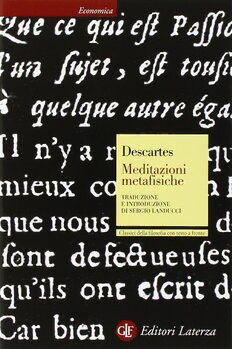
Meditazioni metafisiche
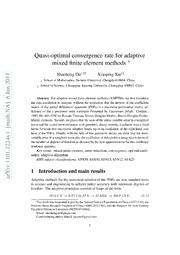
Quasi-optimal convergence rate for adaptive mixed finite element methods
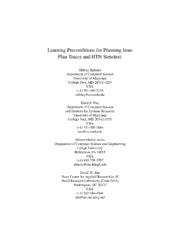
DTIC ADA448060: Learning Preconditions for Planning from Plan Traces and HTN Structure
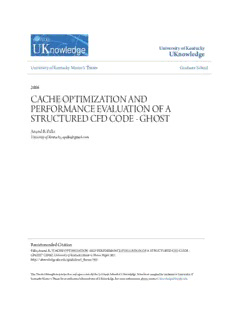
cache optimization and performance evaluation of a structured cfd code
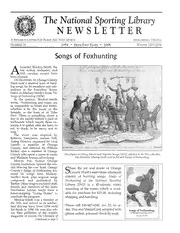
NSLM Newsletter - Winter 2006

ES 4755: GENERAL REQUIREMENTS FOR SAFETY OF LAMP CONTROL GEAR

BY ORDER OF THE SECRETARY OF THE AIR FORCE AIR FORCE INSTRUCTION 21-101 21 ...
![Report of the fifth session of the Committee on aquaculture [elektronische middelen] book image](https://cdn.pdfdrive.to/media/content/thumbnails/61c9c127-6885-4257-83d0-ade79992e930.webp)
Report of the fifth session of the Committee on aquaculture [elektronische middelen]
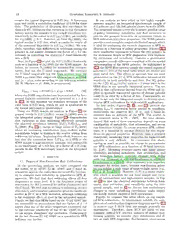
Optical Star-Formation Rate Indicators

Это было навсегда. 1968-1985.

Dark Energy Models in the w - w' Plane
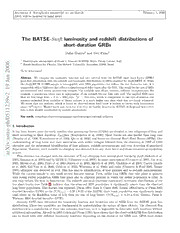
The BATSE-Swift luminosity and redshift distributions of short-duration GRBs

Observational constraints on dark energy with generalized equations of state
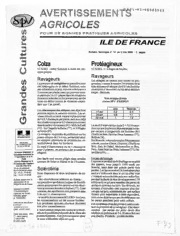
Avertissements Agricoles - Grandes cultures - Ile de France - 2006 - 14
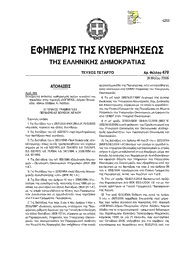
Greek Government Gazette: Part 4, 2006 no. 479
